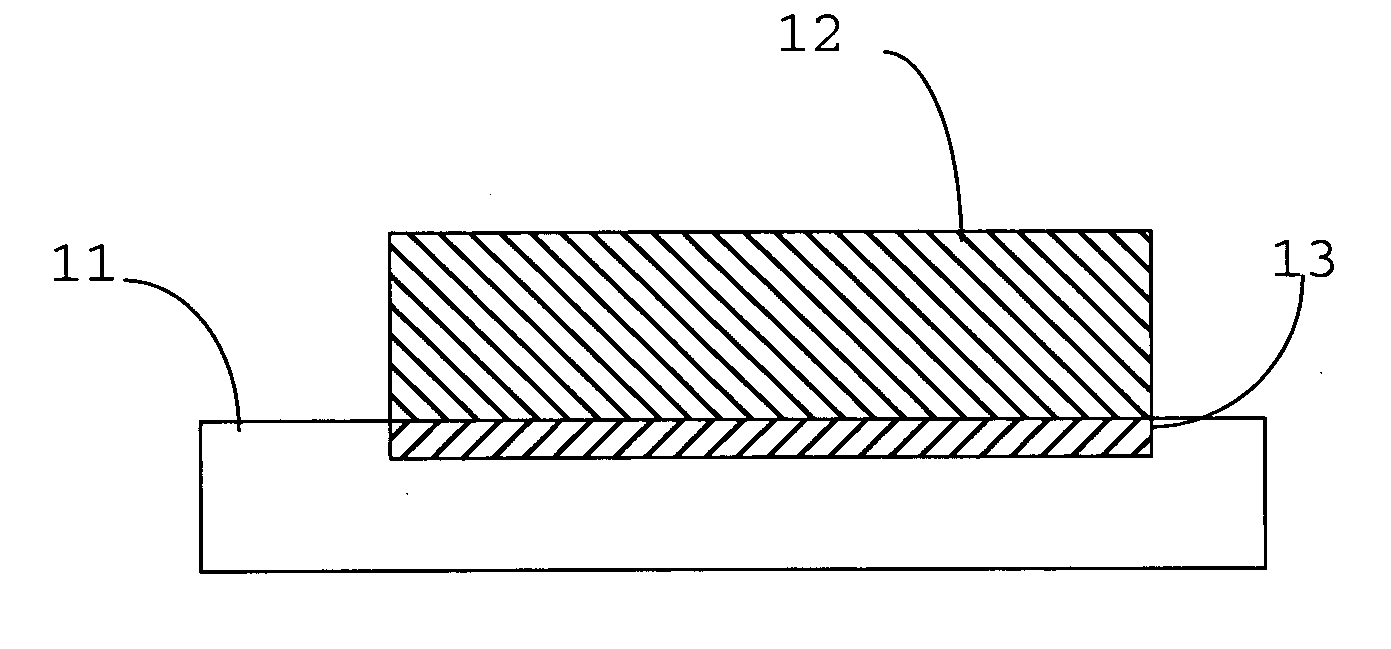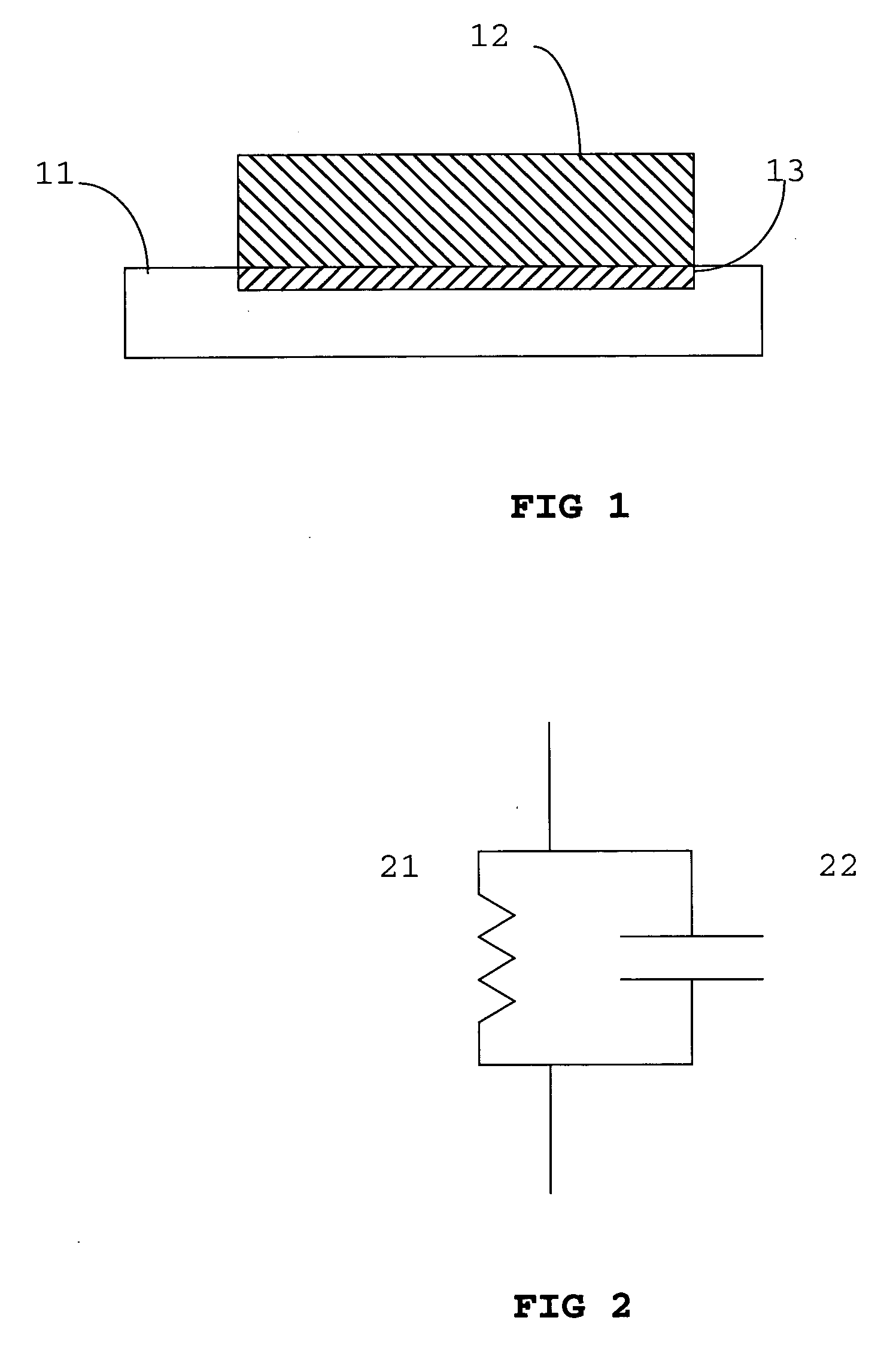Combined high reliability contact metal/ ballast resistor/ bypass capacitor structure for power transistors
a high-reliability, contact metal technology, applied in the direction of semiconductor devices, electrical equipment, transistors, etc., can solve the problem of low defect density process of other metals patterned by less favorable means, and achieve the effect of keeping current from increasing and resistance behavior
- Summary
- Abstract
- Description
- Claims
- Application Information
AI Technical Summary
Benefits of technology
Problems solved by technology
Method used
Image
Examples
first embodiment
[0017] N-type sub-collector, n-type collector, p-type base, n-type emitter, and n-type emitter contact layers are formed on a semi-insulating GaAs wafer by conventional means, with the constraint that the top 50 to 200A of the base layer is doped between 8×1018 and 8×1019 / cm3 p-type.
[0018] The wafer is then processed to form an interdigitated npn HBT by using conventional means, or similarly, using the structure described in the patent application titled “Integrated anneal cap / ion implant mask / trench isolation structure for III-V devices (application number 10801431), until the base semiconductor is exposed.
[0019] The surface of the semiconductor is cleaned with an acid such as HCl, then tungsten is then deposited on the entire wafer using physical vapor deposition.
[0020] Photoresist is patterned over the tungsten using methods well known in the art.
[0021] The tungsten is etched using a fluorine-containing plasma into a pattern defined by the photoresist.
[0022] The photoresist ...
second embodiment
[0024] A interdigitated power n-channel field effect transistor is fabricated on GaAs up to the point of source contact by conventional means, except the source region is doped between 8×1018 and 8'1019 / cm3 n-type.
[0025] The surface of the semiconductor is cleaned with an acid such as HCl, then tungsten is deposited on the entire wafer using physical vapor deposition.
[0026] Photoresist is patterned over the tungsten using methods well known in the art.
[0027] The tungsten is etched using a fluorine-containing plasma into a pattern defined by the photoresist.
[0028] The photoresist is removed by methods well known in the art.
[0029] Optionally, a dielectric may be deposited over the newly patterned source contact metal, and annealed at an elevated temperature to sinter the contact. The temperature required for contact sinter must be high enough for the tungsten to absorb interfacial oxide between it and the semiconductor, but not high enough to damage the semiconductor (400-700 C)....
PUM
 Login to View More
Login to View More Abstract
Description
Claims
Application Information
 Login to View More
Login to View More - R&D
- Intellectual Property
- Life Sciences
- Materials
- Tech Scout
- Unparalleled Data Quality
- Higher Quality Content
- 60% Fewer Hallucinations
Browse by: Latest US Patents, China's latest patents, Technical Efficacy Thesaurus, Application Domain, Technology Topic, Popular Technical Reports.
© 2025 PatSnap. All rights reserved.Legal|Privacy policy|Modern Slavery Act Transparency Statement|Sitemap|About US| Contact US: help@patsnap.com



